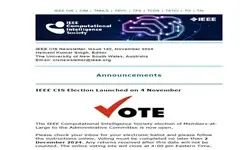PLENARY: Utilization of large-scale brain image database for digitalization of psychiatric and neurological disorders
Saori Tanaka, Nara Institute of Science and Technology (NAIST), ATR, Japan.
-
Members: FreeCIS
IEEE Members: Free
Non-members: FreeLength: 00:56:56
05 Jul 2024
Saori Tanaka, Nara Institute of Science and Technology (NAIST), ATR, Japan.
ABSTRACT:"In recent years, neuroimaging databases for psychiatric and neurological disorders have enabled users to find common and disease-specific features and redefine disease spectra using data-driven approaches. In the Brain/MINDs beyond (2018-2023), the neuroimaging database projects have established the multiple sites, multiple disorders MRI database.
A remarkable feature of this database is the traveling-subjects dataset; each participant was scanned at each multisite. This led to the development of a harmonization method to reduce site differences and the development of a generalizable diagnostic marker with brain networks of major depressive disorder (Yamashita, et al., 2020). This database has expanded to 14 disorders and over 16 sites, and over 5,000 MRI data will be collected by the end of the project. This will be the largest MRI database of multiple neurological and psychiatric disorders from multiple sites. In addition, this database includes longitudinal patient data, allowing for the evaluation of treatment effects. This database is expected to lead to the stratification and the development of new treatment methods. Here, as a potential use of the database, I will suggest an integration with approaches based on the computational theory of the brain in addition to data-driven approaches. Computational neuroscience studies understanding the brain mathematically focused on the neural mechanisms of information processing. In recent years, these approaches have been applied to understanding psychiatric disorders. I will show some previous studies using large-scale behavioral data and computational models of psychiatric disorders and demonstrate possibilities of fusion with computational models and neuro-behavioral databases."


